HIGHLIGHTS

NOAA Celebrates National Seafood Month
Chris Oliver, head of NOAA
Fisheries, highlights seafood and the people who help make our country a global leader in seafood sustainability.
Join us all month long as we celebrate the fishermen, the farmers, and the
science-based stewardship behind U.S.-produced seafood.

Seafood
Import Monitoring Program - Pilot Testing for Data Transmission
This week, NOAA Fisheries, in
consultation with U.S. Customs and Border Protection, initiated pilot testing for
electronic transmission of harvest and traceability data required for the
Seafood Import Monitoring Program. SIMP established requirements for importing
certain priority fish and fish products identified as being particularly vulnerable
to IUU fishing or seafood fraud.

International
Team Investigates Impacts of Harmful Algal Blooms on Aquaculture
To investigate
how harmful algal blooms can impact shellfish aquaculture, a team of American and
French researchers have joined forces on a project to better understand how
toxins accumulate in shellfish over time.
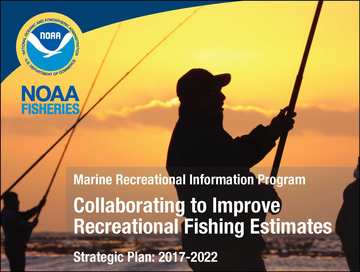
MRIP
Response to National Academies Recommendations and 5-Year Strategic Plan
NOAA Fisheries has released its
Framework for Addressing the National Academies Recommendations and the final
version of the 5-year MRIP Strategic Plan.
Both documents will serve as important guideposts as we continue our commitment
to making improvements to catch and effort surveys and the resulting estimates.
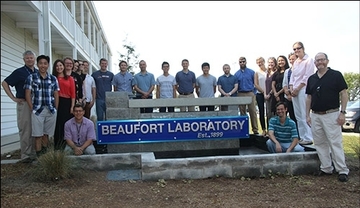
2017
NOAA Fisheries–Sea Grant Fellows
NOAA Fisheries, together with
NOAA’s National Sea Grant College Program, announced the 2017 NOAA Fisheries–Sea
Grant Joint Fellowship recipients. This fellowship program supports students
pursuing doctoral degrees in population and ecosystem dynamics and marine
resource economics.
Alaska
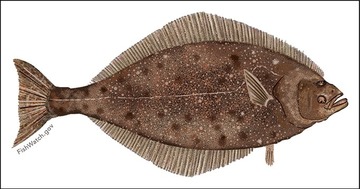
Proposed
Compensated Halibut Reallocation – Open for Public Comment
By November 17, please submit your comments on a proposed
rule authorizing a non-profit Recreational
Quota Entity to represent the halibut charter sector in southeast Alaska and
the central Gulf of Alaska. The purpose of the RQE is to purchase commercial
halibut quota shares to supplement recreational fishing quota.

Field Dispatch: Bowhead Whale Calves in
Arctic
Most bowhead whale calves are
born during the whales’ spring migration from the Bering Sea to the Beaufort
Sea. NOAA Fisheries’ Aerial Surveys of Arctic Marine Mammals project expends
extra effort to document the presence or absence of bowhead whale calves, providing
important insight into the overall health of the population.
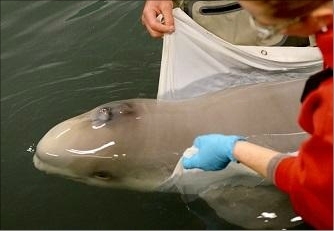
Stranded Beluga Calf Transported for Treatment
The Alaska SeaLife Center
received a stranded male beluga whale calf from Cook Inlet last weekend. The
solitary animal, estimated to be 2 to 4 weeks old, was found stranded near
Trading Bay. With no adult belugas nearby and attempts to encourage it back
into the water unsuccessful, NOAA decided to transfer the calf to Seward for
rehabilitation.
West Coast
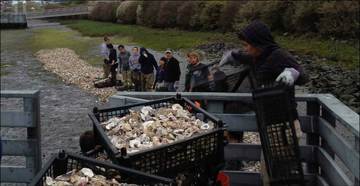
Forum on Southern California Oyster Restoration
Olympia oysters, long identified
with the Pacific Northwest, once thrived along the entire West Coast, including
Southern California. Earlier this year, NOAA scientists participated in a forum
convening shellfish and restoration experts to develop ideas for restoring
Olympia oysters to Southern California bays and estuaries.
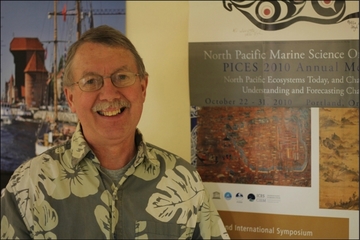
International
Prize for Northwest Ocean Research
Every few weeks since the early
1960s, scientists have set out from Newport, Oregon, to sample ocean
conditions, continuing one of the longest and most consistent ocean monitoring
programs on the continent’s western coast. Recently, the international North
Pacific Marine Science Organization recognized the Northwest Fisheries Science
Center and Oregon State University for their joint work on the data collection.

Warming Waters
Draw Spawning Fish North
Unusually warm ocean conditions
off the Pacific Northwest in the past few years led anchovies, sardines, and
hake to begin spawning in northwest waters much earlier in the year than
biologists had previously recorded. The rapid northerly shifts in spawning may
offer a preview of future conditions if ocean warming continues.
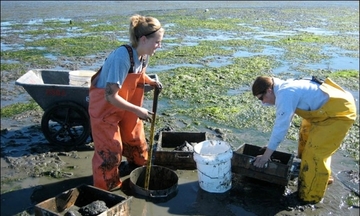
Coastal
Burrowing Shrimp: Estuarine Engineers
Coastal burrowing shrimp are more
than just good bait for sturgeon and salmon. As they create their complex
burrows beneath the sand, they play a key role in moving nutrients around in
estuarine ecosystems. NOAA scientists and partner researchers have teamed up to
study the diets of burrowing shrimp and their impacts on the estuaries they
inhabit.
Pacific Islands
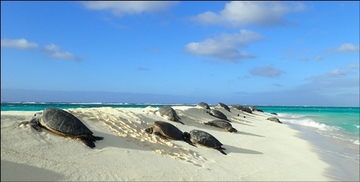
Green Sea
Turtles in Hawaii, By the Numbers
Every year, many green sea
turtles make the 1,200-mile round-trip migration between the main Hawaiian
Islands and their nesting sites at French Frigate Shoals in the Northwestern
Hawaiian Islands. Since 1973, NOAA scientists have also made the annual journey
out to French Frigate Shoals to monitor the nesting behavior.
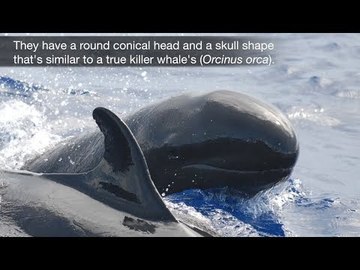
Video: False
Killer Whales in the Hawaii Islands
Despite their name, false killer
whales are not closely related to true killer whales, though they have
similarly shaped skulls. Watch a new video to learn more about the three
populations of false killer whales that live in Hawaiian waters and how NOAA is
working to conserve them.
Southeast
Revised
Reporting for Federal Seafood Dealers Impacted by Irma
After Hurricane Irma made
landfall on September 10, NOAA Fisheries determined that catastrophic
conditions exist in nine counties in Florida. NOAA has temporarily revised
reporting requirements for federal seafood dealers in the affected areas.
Greater Atlantic
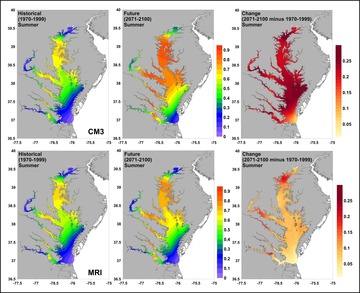
Warming
Climate Could Increase Bacterial Risks in Chesapeake Bay
Researchers have found that three
common species of Vibrio bacteria in
Chesapeake Bay could increase with changing climate conditions by the end of
this century. Water or shellfish contaminated with Vibrio species can cause human illness (vibriosis).

Why are Quahogs Gone in Sandy Hook Bay?
In the 1970s, the amphipod Ampelisca abdita arrived in Sandy Hook
Bay, New Jersey. The tiny crustaceans built dense mats of tubes across the
bay’s muddy bottom, creating habitat for quahogs to settle and thrive. But in
2011, the amphipod disappeared, and with it the little quahogs that grew on its
tubes. Scientists are searching for the cause of the changes.

East Coast
Estuaries House Shark Nursery Habitat
Every summer, scientists from the
Northeast Fisheries Science Center and their colleagues in East Coast states
conduct surveys in estuaries and nearshore waters to study known and suspected
shark nursery habitat. The work is part of the Cooperative Atlantic States
Shark Pupping and Nursery (COASTSPAN) program, an ongoing effort to understand
which species live in these locations and why.
|